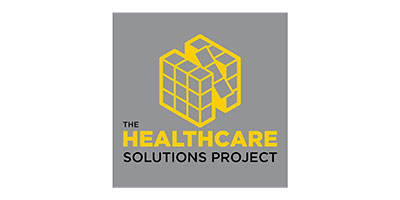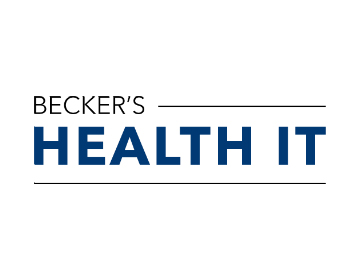
Biomarker Discovery to Improve Clinical Trials and Advance Precision Medicine
In the U.S., the cost of chronic diseases is more than $3.7T1 annually. Massive amounts of healthcare data are generated through wearable data, healthcare claims, electronic health records, and even complex genomic datasets. By 2025, the average individual will accumulate more than 4,900 daily digital device interactions2. Data alone, however, isn't the answer. The key is to find patterns within the data to proactively intervene and reduce the inefficiency within the $808 billion3 healthcare industry.
In the U.S., the cost of chronic diseases is more than $3.7T1 annually. Massive amounts of healthcare data are generated through wearable data, healthcare claims, electronic health records, and even complex genomic datasets. By 2025, the average individual will accumulate more than 4,900 daily digital device interactions2. Data alone, however, isn’t the answer. The key is to find patterns within the data to proactively intervene and reduce the inefficiency within the $808 billion3 healthcare industry.
Over the past decade, genomics and computational biology breakthroughs have created significant opportunities to advance precision medicine and address growing healthcare costs. Genomic research and advancements in molecular medicine have provided high-resolution snapshots of the RNA and DNA modifications within the body’s cells and tissues due to a wide range of diseases. This research enables scientists to identify biomarkers indicative of disease risk or treatment tolerability.
Clinical trials increasingly use biomarkers to assess health status and monitor treatment effects. Biomarker discovery efforts track how a specific disease process or treatment leads to changes in DNA, RNA, or proteins measured in blood, body fluids, or tissues. Biomarker signatures fuel new diagnostic tests, including companion diagnostics, that confirm or stratify disease risk, stage disease, or even categorize disease subtypes. Biomarkers are measured individually, such as a single protein with known, measurable differences following a specific treatment or as a collection of biomarkers analyzed in unison. Biomarkers are classified into four distinct groups: prognostic biomarkers, predictive biomarkers, pharmacodynamic biomarkers and surrogate endpoints4. Identification of effective candidate biomarkers must consider several characteristics, including whether it is prognostic or predictive, their performance in a particular diagnostic assay, and clinical utility.
Using established biomarkers and discovering new biomarkers allows for real-time data collection, tracking molecular patterns that emerge as patients respond to treatment. The opportunity to enhance segmentation based on molecular patterns increases the likelihood of a successful clinical trial. Additionally, continuous accumulation of data allows for adopting adaptive treatment strategies and interim trial modification. For example, using sequential grouping methods provides a statistical framework that allows for repeated assessments of treatment efficacy. As soon as the accumulated data offer adequate evidence to conclude that the experimental regimen is highly likely (efficacy monitoring) or unlikely (futility monitoring) to succeed, these insights provide opportunities to continue or terminate the trial. Typically, bringing a new drug to market costs $1B5. Giving pharmaceutical companies an accurate way to determine if early termination is prudent allows the organization to focus its time and effort on other R&D opportunities.
The Benefits of Biomarkers
Disease-specific biomarker discovery unlocks new diagnostic technologies that improve disease detection and monitoring efficiency. These new approaches provide opportunities to reduce the number of clinical trial participants and duration of clinical trials, accelerating development and reducing costs. As biomarker data accumulates, these data resources can be used to inform ongoing efforts to design and implement future clinical trials, refining the inclusion and exclusion criteria to mitigate potential adverse reactions and improve the overall probability for success6.
According to a recently published review7 in oncology, biomarkers have increased clinical trial success rates in up to three different indications, including breast cancer, non‐small cell lung cancer (NSCLC), and melanoma. The inclusion of biomarker status as a covariate significantly improved the fit of the machine learning models that predicted the positive or negative trajectories using specific treatments during each stage of the clinical trial process. Calculated hazard ratios signal that biomarker-based drug approvals have a five-fold greater likelihood for success. These results support the early adoption and use of biomarkers in oncology clinical trials enabling researchers to optimize and personalize cancer disease management, increasing the chances of successful clinical trials.
Today, many investigational drugs fail clinical trials. Therefore, pharmaceutical companies are actively working to identify new strategies that increase the odds of success by designing biomarker-based clinical trials when possible. To date, more than 60% of all clinical trials include biomarkers, and trials that include biomarkers are 2-5x more likely to succeed and receive FDA approval.
Partnering to Advance Healthcare Innovation
To further precision medicine, Decode Health has partnered with Quest Diagnostics to acquire and analyze blood samples from patients with various chronic conditions, including autoimmune diseases like multiple sclerosis. Through this ongoing collaboration, Decode and Quest are creating large molecular datasets using RNA-sequencing to identify novel biomarkers to diagnose, monitor, and predict disease outcomes efficiently. These datasets will fuel new diagnostic tests. In addition to diagnostic use cases, these datasets are rich resources for pharmaceutical companies to enhance drug discovery efforts and refine future trials.
As biomarker-based clinical studies grow, we will continually improve how we diagnose, treat, and manage chronic and acute diseases. These efforts have the potential to impact millions of patients’ lives through better disease detection and treatment options.
2 RBC Capital Markets: Navigating the changing face of healthcare episode
3 28 astonishing US Healthcare Industry Statistics (2022])
4 Biomarker-based clinical trials: Study Design and Regulatory Requirements 2020
5 Gardner, New estimate puts cost to develop a new drug at $1b, adding to long-running debate 2020
6 Biomarker-Driven Oncology Clinical Trials: Key Design Elements, Types, Features, and Practical Considerations
7 Parker et al., Does Biomarker use in oncology improve clinical trial failure risk? A large-scale analysis 2021


















